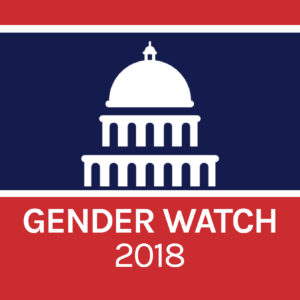The results of Maryland’s primary on Tuesday show that the state is following national trends with respect to the success of women candidates while also highlighting some areas in which women struggle to make headway in the Old Line State, particularly with respect to executive leadership.
The most visible race held on Tuesday was the Democratic primary for Governor, in which a crowded field of seven Democrats sought the right to face Republican Governor Larry Hogan, who ran unopposed, in November (two perennial fringe candidates—both men—also appeared on the ballot). Of those seven, one of the leading candidates, Baltimore County Executive Kevin Kamenetz, unexpectedly passed away in early May, leading his running mate Valerie Ervin to step in and resume his campaign, only to decide to drop out several weeks later. Former NAACP Executive Director Ben Jealous, a proud progressive who was endorsed by Bernie Sanders, won the race pretty handily, defeating Prince George County Executive Rushern Baker, the candidate who had the most endorsements of the party’s establishment.
Only one female candidate from the beginning of the campaign, Krish O’Mara Vignarajah, a first-time candidate who had served as Michelle Obama’s Director of Policy, sought her party’s nomination for the governorship. She also tapped another woman, Sharon Blake, a teacher and former teacher’s union president, as her running mate, making the ticket the first all-female women of color gubernatorial slate in the country. Vignarajah, age 38, came in fourth place with 8 percent of the vote.
There are three major takeaways from Krish Vignarajah’s campaign that speak to notable gender dynamics.
First, Vignarajah’s age and lack of political experience did not inhibit her decision to run for office—in fact, her decision to run was finalized while she was 8 months pregnant and saw a poster featuring a photo of potential gubernatorial candidates—and not one of them was a woman. Political scientists have found that women typically wait to run until their children are older or are more likely to run their first campaigns for races further down the ballot—so Vignarajah’s bold gamble is not typical of most women who run for office, but Donald Trump’s election appears to be inspiring a record number of women to run for office.
Second, like several other, first time female Democratic candidates running this cycle—including most notably Alexandria Ocasia-Cortez—Vignarajah made gender a deliberate part of her campaign strategy. She was one of two gubernatorial candidates nationally to breastfeed an infant in her campaign ad. Apart from that compelling visual, she finished her ad by stating that while many Marylanders believe that no man can beat the popular incumbent Larry Hogan, she’s “no man”—a line she used regularly on the campaign trail. Vignarajah often touted the importance of electing more women to office as a reason voters should pick her. This strategy stands in contrast to ideas touted by political consultants who often advise women to downplay their gender during their campaigns, in an effort to stifle gendered stereotypes that they fear that voters still hold about women candidates.
The third takeaway from Vignarajah’s campaign is that being a woman is not enough to win election—not even in a Democratic primary season in which women appear to be paying more attention to politics after Trump’s election nationally. Despite some high-profile support from Ashley Judd and others drawn to Vignarajah’s campaign, which was among the first to offer a substantial set of policy prescriptions to deal with sexual harassment in wake of the #MeToo movement, Vignarajah lacked the fundraising and name-recognition that several of her male counterparts enjoyed.
Women candidates did not fare much better in primaries for Maryland’s Senate and U.S. House races either. Senator Ben Cardin handily defeated four women—including Chelsea Manning, the former soldier and whistleblower who revealed state secrets to Wikileaks and was later pardoned by President Barack Obama—in his Democratic primary while just only one woman sought the GOP nomination to take on Cardin in the fall; she came in third. In total, only two women emerged victorious in the Republican primaries for the U.S. House of Representations; in both cases, the seats are heavily favored to remain in Democratic hands, which means that Maryland is likely to remain a state without female representation in its congressional delegation this fall.
At the state legislative level, however, there was some brighter news for women candidates in Maryland. As my analysis with Goucher College’s Mileah Kromer shows, the number of women candidates who ran for the Maryland General Assembly increased from 25 percent in 2014 to 34 percent this year. Women candidates were four times as likely to be Democratic candidates rather than Republican ones, another indication that the pink wave this election year is Democratic. Among women who are Democrats, 57 percent won their races (including 10 percent who ran unopposed). For Democrats, women actually outperformed men by nearly 10 percentage points in terms of electoral success at this level of office. Far fewer in number, Republican women won at nearly the same rate (70 percent) as their male counterparts (72 percent). In a state in which Democratic voters outnumber Republicans nearly two to one, and in which the state legislature is dominated by Democratic lawmakers, most of these Republican women will likely not win come November.
When it comes to the state legislature, Maryland is following national trends with respect to the pink wave–although it is largely a Democratic one. However, when it comes to Congress and the executive level of political office, Maryland women still lag behind. As for statewide offices, which in addition to the governor’s race also include races for Comptroller and Attorney General, women made up only two of sixteen candidates. Of all of the candidates who ran for Congress or Senate during the primaries, just 17 percent were women. Of course, only one U.S. House race has an open seat, which tends to draw more competitive candidates than seats with incumbents (and which drew 4 women out of 12 total candidates). In Maryland, it is expected that all eight male incumbents seeking re-election to Congress (including Senator Ben Cardin) will easily win re-election, which serves as a good reminder that women’s progress for national office is often a function of structural barriers such as incumbency.
Even in a reliably “blue” state such as Maryland, these primary results show that women’s path to political leadership is in many cases stubbornly blocked.


 From March to December 2018, the
From March to December 2018, the 